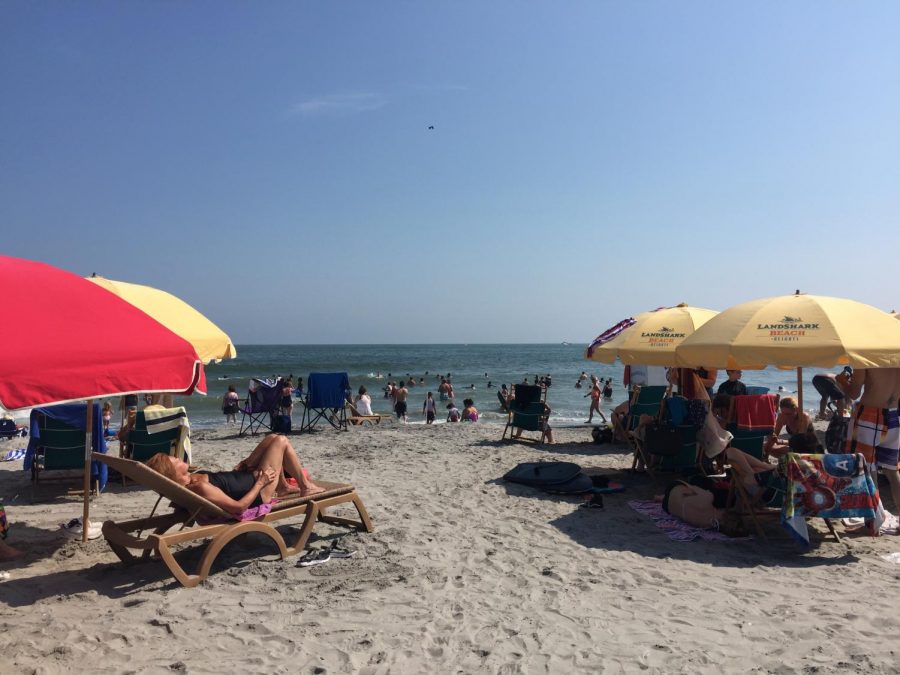Can Spring Break Become Dangerous and Deadly?
Are teens truly safe while they are on spring break?
To students all over the country, the months of March and April are a huge drag. They move along slowly as each person’s workload continues to grow. Students are less worried about their homework and upcoming tests, but rather they are keeping their eyes on the prize: Spring break. Spring break is the perfect time for students to get a break from homework and projects and get just a small taste of what the summer has in store for them. While students are planning on relaxing and having the times of their lives in exhilarating places, many do not realize the dangers of going on these exciting trips.
Of all the possible dangers, sunburn is the least of many students’ concerns. According to Reyes law firm, an estimated 60-75 million people will be travelling to some sort of destination for spring break. It is a well-known that teens and young adults choose to spend their vacations partying and making poor choices.
Teens describe the regrets that they have after traveling somewhere for the break, mostly due to the location and the risks that they faced. The lack of parental supervision, mixed with alcohol and drug use lead to many teens returning home with disappointed guardians and criminal records.
During spring break, death from car accidents at popular destinations spikes up to 9 percent among drivers under 25. This could be due to either intoxication or the lack of knowledge about the other countries driving rules. Researchers explained that there were no increase in car related fatalities in non-spring break locations, proving that these accidents are due to the holiday itself. Car accidents are not the only things parents should be worried about though.
Additional dangers that teens and young adults could run into while on vacation are fights, kidnappings, harassment, and theft. Highlanders decided to give their take on spring break, and the potential dangers.
According to ABC News, “During spring break, teens are drawn to crowds and succumb to peer pressure. Things can get downright deadly. Just last week, police said, a 20-year-old college student from Michigan died in an alcohol-related incident while on spring break in Panama City, Fla.”
“I do not think [spring break] is dangerous in all situations. Making silly and inappropriate decisions while out-of-town is something that I find dangerous for teens,” says junior Maya Bellomo.
These inappropriate decisions that can be found while students are on spring break is linked to the frequent amount of partying, where many decide to consume dangerous amounts of alcohol. According to the Alcohol treatment website, excessive consumption of alcohol leads to alcohol poisoning, which spikes over spring break. Alcohol poisoning is caused when you consume more than your body can process and flush out.
Alcohol poisoning is no joke, and many have suffered from severe dehydration, hypothermia, choking, and even brain damage. No one truly knows how much you need to consume for it to be dangerous, but on average a male who has five or more drinks and a female who has four or more drinks is considered unsafe levels of consumption.

Many students from all over the country will be travelling for spring break. Has any of them considered the dangers?
Knowing the signs of when someone has alcohol poisoning is essential information for teens and young adults everywhere. If something seems to be wrong with someone who has recently been consuming alcohol they could be passing out, vomiting, or in a blackout state and may not be able to respond to simple dialogue. More warning signs are pale skin, irregular reasoning, low body temperature, clammy skin, and confusion.
Sadly, drinking is not the only major danger that many could face. Watching your beverage and who is handling or around it is also important. There are drugs out there like Gamma Hydroxybutyrate, Ketamine, and Rohypnol (commonly known as “roofies”) that are slipped into drinks. These date rape drugs are popular during spring break because they are easily slipped into drinks, go into effect quickly and can last for several hours at a time. When the drugs kick in, they cause your body to behave the same way as you would when you are drunk, except you black out faster. This makes it easy for whoever is roofied to be a target for assault.
With all of these negative facts and statistics surfacing around high school and college students favorite time of year, many can not help but wonder; is there a solution to this chaos? Do teens actually feel safe while they are travelling during this exciting yet scary time of year?
“We can prevent [these dangers] by being very cautious and aware of our surroundings. I feel safe when I am on spring break because I am with close friends, and we all look out for each other. My mom will be coming this year too, so I feel safe when I travel with people I actually know,” said junior Annabelle Dye.
Travelling in groups or with a buddy system set in stone is just one of the steps that could be taken to prevent future injuries or accidents. Other spring break safety tips include: Not booking a room on the first floor (which are more open to the pubic and are prone to being broken into), only use ATMs when it is daylight outside, and plan each transportation process accordingly to prevent separation from friends and family.
Spring break will always have the possibility of being dangerous. If students wish to have a safe and enjoyable trip this spring break, they must set some guidelines with their friends and family in order to prevent being vulnerable.






